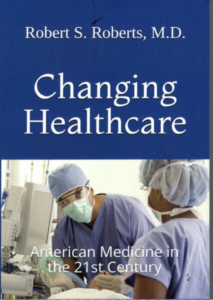
This blog is normally dedicated to discussing issues concerning healthcare. But long-time readers will know my second most passionate subject is education. The reason for this is simple; education is the ticket to a successful life, especially to lifting low-income students out of poverty. With a good education there is no limit to what anyone can accomplish if they are determined and willing to work hard.
But education has been an uneven playing field for millions of children in our country, especially those who grow up in our inner cities. Poor schools lead to poor education, which leads to children trapped in poverty.
The statistics on our education system are alarming, to put it mildly. Since the Department of Education was founded in 1979 by President Jimmy Carter, the federal government has spent over three trillion dollars on education – and our children are less educated than they ever were before!
This is unacceptable and President Trump is trying to do something about it. He has just signed an executive order to close the Department of Education and return control of education to the states. The process of actually closing the department will take time and Congressional approval, but this is a good first step.
How popular is the idea of closing the Department of Education?
I’m glad you asked. The Epoch Times has just published the results of a survey done of the American people to measure their response to this question. Here is what Tom Ozimek writes in The Epoch Times: “A new Epoch Times survey reveals overwhelming support among readers for reforming—and in many cases, eliminating—the Department of Education. Respondents strongly favored reducing the department’s workforce, transferring control of education policy to the states, and giving parents greater influence over school decisions.”
The poll, which drew over 31,000 responses, was conducted in the days leading up to President Donald Trump’s March 20 executive order, which launched the process of dismantling the Department of Education and returning educational authority to state governments.
Since its establishment in the late 1970s, the Department of Education has spent more than $3 trillion. Yet, according to a White House fact sheet academic performance has stagnated. Despite a 245 percent increase in per-pupil spending, math and reading scores have declined, and American students consistently rank behind peers in other developed nations.
In a speech before signing the order, Trump said federal efforts in education have failed to deliver results. “Today we take a very historic action that was 45 years in the making,” he said. “My administration will take all lawful steps to shut down the Department,” Trump continued. “We’re going to shut it down, and shut it down as quickly as possible—it’s doing us no good.”
A central finding in the survey is the near-unanimous backing for reducing the Department of Education’s workforce. Ninety-three percent of respondents supported the move, with 85 percent saying they “strongly agree.” Only 6 percent were opposed. That view was reinforced by answers to a related question, in which 85 percent said that cutting the department’s staff and shifting control to the states would improve the quality of education in their own communities.
Here are some of the survey responses:
- I support the decision to reduce the Department of Education’s workforce.
Strongly Disagree: 5 percent
Disagree: 1 percent
Neutral: 2 percent
Agree: 8 percent
Strongly Agree: 85 percent
93 percent agree (85 percent strongly agree, 8 percent agree) Only 6 percent disagree (5 percent strongly disagree, 1 percent disagree) Neutral: 2 percent
- Parents should have more influence in decisions regarding school curriculum, policies, and educational standards.
Strongly Disagree: 2 percent
Disagree: 2 percent
Neutral: 3 percent
Agree: 8 percent
Strongly Agree: 85 percent
93 percent agree (85 percent strongly agree, 8 percent agree) Only 4 percent disagree (2 percent strongly disagree, 2 percent disagree)
- Cutting the Department of Education’s workforce and shifting control to states will improve education quality in my community.
Strongly Disagree: 5 percent
Disagree: 2 percent
Neutral: 8 percent
Agree: 17 percent
Strongly Agree: 68 percent
85 percent agree (68 percent strongly agree, 17 percent agree) Only 7 percent disagree (5 percent strongly disagree, 2 percent disagree) Neutral: 8 percent
- States should have control over education policy without involvement from the federal government.
Strongly Disagree: 4 percent
Disagree: 3 percent
Neutral: 8 percent
Agree: 20 percent
Strongly Agree: 65 percent
85 percent agree (65 percent strongly agree, 20 percent agree) Only 7 percent disagree (4 percent strongly disagree, 3 percent disagree) Neutral: 8 percent
- Shifting control to states will ultimately improve America’s performance in global education rankings.
Strongly Disagree: 4 percent
Disagree: 2 percent
Neutral: 9 percent
Agree: 20 percent
Strongly Agree: 65 percent
85 percent agree (65 percent strongly agree, 20 percent agree) Only 6 percent disagree (4 percent strongly disagree, 2 percent disagree) Neutral: 9 percent
More survey results next post.

